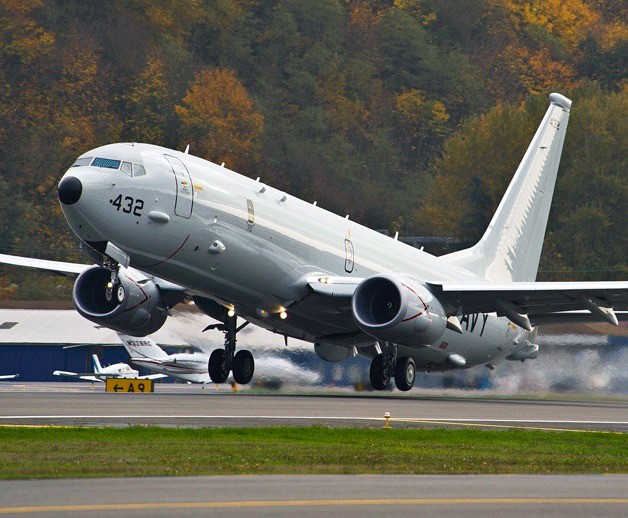Not only is the Poseidon coming to Whidbey Island Naval Air Station, there could be even more of the aircraft stationed here than originally planned.
The Navy is preparing a Supplemental Environmental Impact Statement to address potential environmental impacts of new home-basing alternatives for the P-8A.
The Navy will study three alternatives to its 2008 Record of Decision, all of which would result in basing more P-8As at NAS Whidbey.
“I’m never pleased when the Navy decides to open a Record of Decision unless it means it’s good news for Washington (state),” Rep. Rick Larsen said. “At minimum, this move will improve the standing of NAS Whidbey.”
The current Record of Decision calls for basing the new Poseidon aircraft at three sites: NAS Jacksonville, Marine Corps Base Hawaii Kaneohe Bay and NAS Whidbey Island. For a time, it looked as though NAS Whidbey could be removed from those plans, but that no longer appears to be the case.
Larsen said this latest move makes the Poseidon look like a sure bet for Whidbey Island.
“I’ve never been that worried about it anyway,” he said. “But if folks are still worried after this, I don’t know what else to say.”
According to Larsen, the Navy is reconsidering its plans because plans to move several thousand Marines to Guam have changed.
“Basically Guam’s loss is NAS Whidbey’s gain,” he said. “The (Department of Defense) is not able to put as many marines at Guam, so as a result, those Marines will very likely end up at Kaneohe Bay. Therefore, that pushes the P-8A squadrons allotted to Kaneohe Bay to Jacksonville and Whidbey.”
The 2008 ROD calls for four Poseidon squadrons with a total of 24 aircraft, to be based at NAS Whidbey.
Of the three alternatives the Navy will study, the first would base seven squadrons with 49 total aircraft at Whidbey; the second would still call for four squadrons but the number of aircraft would increase to 28; and the third alternative would base six squadrons at NAS Whidbey with 42 total aircraft.
There are currently four Maritime Patrol Squadrons (VP) based at NAS Whidbey, each with nine P-3C Orion aircraft and approximately 325 personnel. By contrast, each new P-8A squadron is expected to have seven aircraft and approximately 265 personnel.
Should the Navy decide to base more Poseidon squadrons here, it would obviously call for expanding the facility’s footprint, but just how much cannot be determined until a new Record of Decision is entered.
“The Navy would have to follow up with military construction requests to accommodate any changes, but I couldn’t say what those would be,” said Larsen.
According to the Navy, once the Supplemental EIS is complete, the Secretary of the Navy can decide whether to homebase at two locations or to continue with the ROD as it stands.
There will be a 45-day public comment period following the release of the Draft Supplemental EIS, which the Navy anticipates will be in the summer of 2013. Public meetings will be scheduled at that point.
Anyone currently interested in information on the Supplemental EIS can go to www.mmaseis.com.



